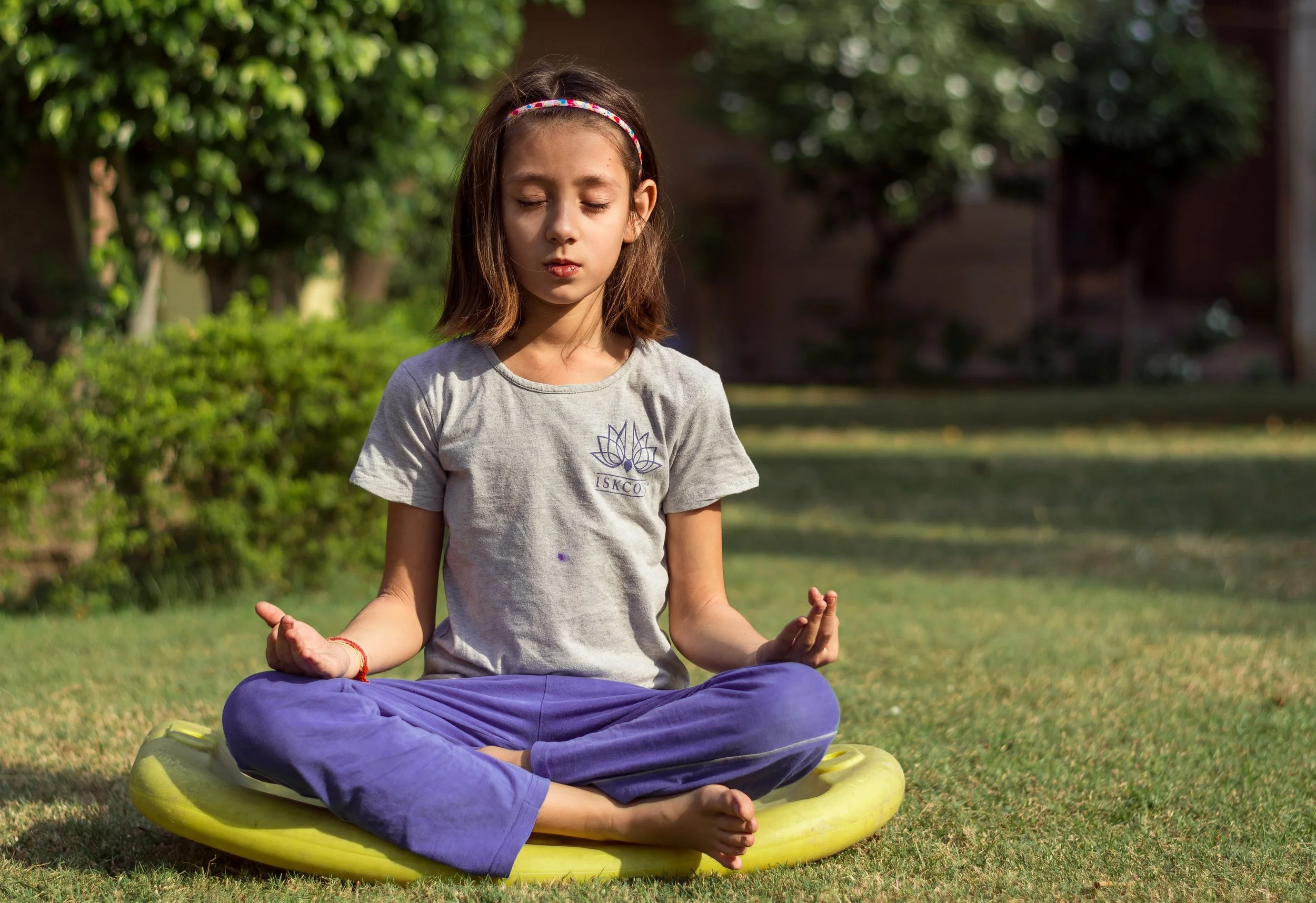How to Support Children with ACEs Using Meditation
A person’s childhood will shape and define who they become as adults. This makes the topic of Adverse Childhood Experiences all the more important.
Adverse Childhood Experiences (ACEs)
Adverse Childhood Experiences, or ACEs, describe the different types of trauma a child might experience while they are under the age of 18.
ACEs are categorized into three groups: abuse, neglect, and household challenges and include physical and emotional neglect, emotional, physical, or sexual abuse, and living in a household with someone who is an alcoholic, violent, mentally ill, suicidal, a criminal, or a drug user. [1]
Around 48% (34 million) U.S. children are affected by ACEs and have been linked to causing health issues and a decrease in emotional well-being later in life. [2]
While not explicitly covered in the previously cited studies, the global COVID-19 pandemic could be included in the household challenges group. Loss of parental income, disease, and early deaths in the family all have the potential to cause significant and lasting trauma to a young person.
How do ACEs impact children?
Experiencing one or more ACEs can cause several negative effects in children.
1. Childhood Depression
Depression can lead to sleep disorders, substance abuse, and inactivity. [3]
2. Childhood Stress
Exposure to ACEs can cause toxic stress leading to disease and early death.
3. Behavioral Issues
ACEs can cause internal and external behavioral issues and increase the possibility of an ADHD diagnosis in 11 to 14-year-olds.
4. Childhood Anxiety
If left untreated, anxiety can lead to children turning to maladaptive coping mechanisms in adulthood, such as substance abuse.
Additionally, ACEs can affect their social functioning, health, ability to make a living, or ability to keep meaningful relationships as an adult.
Recognizing the Symptoms of ACEs
Because of the negative effects of ACEs, it is important to recognize the signs of trauma to prevent additional trauma and begin the healing process.
The first things to look for are physical injuries. Bruises, cuts, and broken bones are common indicators of abuse or neglect.
Another sign is if children have trouble expressing themselves or constantly display anxiety. Many children will not tell someone they are experiencing trauma, so it's important for a trusted adult to ask if they are okay. [4]
Helpful Questions
The Journal of Affective Disorders recommends asking two questions to identify if children are experiencing ACEs:
In the past year, have you had 2 weeks or more during which you felt sad, blue, depressed, or lost pleasure in things that you usually cared about or enjoyed?
Have you had 2 years or more in your life when you felt depressed or sad most days, even if you felt okay sometimes?
If yes, have you felt depressed or sad much of the time in the past year? [5]
By being observant and asking the right questions, you can identify a child who may be experiencing ACEs, and help them start the healing process.
ACEs Impact on School
While in-person classes are mixed across the nation, it's worth briefly mentioning the impact of ACEs on school. Aside from home, children spend most of their time at school, so we should look at how those interactions can contribute to ACEs, and how ACEs can influence academic performance.
The largest factor is bullying. Bullying adds to a child’s fear, stress, and social isolation. Bullying and ACEs have been proven to lower a child’s mental and physical health, academic skills, GPA, completion of homework, and school engagement. [6] As a result, children are at an increased risk of suicide, self-harm, and violent behaviors. [7]
ACEs and Social Skills
Adverse Childhood Experiences are also known to cause social isolation, which can hinder the development of children's social skills. According to one article published by the Journal of the American Medical Association (JAMA) Pediatrics,
“Adverse psychosocial experiences such as social isolation could be particularly detrimental in the developing child, and initial findings suggest that childhood social isolation may have enduring effects on the clustering of metabolic risk markers in adult life.” [8]
How do ACEs impact children as adults?
ACEs can cause a decrease in mental, physical, and emotional health that lasts well into adulthood. One study found that individuals with four or more ACEs were less likely to graduate high school, maintain skilled jobs, or pursue higher education, and they were more likely to have depression, juvenile arrests, felony charges, and destructive behaviors.
The article further recognized,
“The results of this study suggest that adverse childhood experiences exert detrimental effects for previously unexamined measures of adult well-being, above and beyond the effects of demographic risk and poverty.” [9]
ACEs have lasting impacts on a child's health which means prevention and early treatment is extremely important. So what can we do to help kids thrive?
Resilience and Mindfulness
Resilience means to adapt to unplanned events, such as misfortunes and setbacks. Through resilience, kids learn to cope with situations like the unfortunate outcomes of a global pandemic, being isolated from friends while completing school online, and unanticipated household hardships.
Resilience can protect children from negative effects of ACEs including depression and anxiety. One way to teach resilience is through mindfulness.
The Mayo Clinic recommends these ways to boost resilience to kids with ACEs:
Close relationships with competent caregivers or other caring adults
Communities that support health and development
Concrete support for parents and families
Having a sense of purpose
Individual problem-solving skills and self-regulation abilities
Parental resilience
Mindfulness is a type of meditation that promotes being aware of your environment while focusing on feeling in the present moment.
Research on the correlation between mindfulness and resilience states:
“Using mindfulness-based, mind–body approaches may strengthen families and promote child resilience and success…findings encourage family-centered and mindfulness-based approaches to address social and emotional trauma and potentially interrupt cycles of ACEs.” [10]
By learning mindfulness, a child can increase their resilience, emotion regulation, self-esteem, social skills, and healthy coping mechanisms.
Teaching mindfulness in schools has been shown to improve children's memory, attention, and academic skills while decreasing anxiety, fatigue, and stress. [11]
With many children being kept home to prevent the spread of the coronavirus, parents can take an active role in incorporating simple mindfulness practices such as breathing breaks throughout the day.
By creating safe, stable, and nurturing environments with a strong support system, adults can help prevent abuse and neglect.
Health and wellness activities like YogaEd that teaches kids yoga could also help children mitigate the negative consquences of ACEs.



